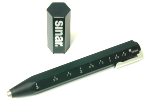
How to compensate for Close-up images


 Where the subject to lens distance is less than 8 times the focal length of the lens a corrective shutterspeed must be computed.
In this computation, if the lens is given in millimeters convert it to inches by dividing the focal length by 25. (1 inch = 2.54mm)
Where the subject to lens distance is less than 8 times the focal length of the lens a corrective shutterspeed must be computed.
In this computation, if the lens is given in millimeters convert it to inches by dividing the focal length by 25. (1 inch = 2.54mm)
EXAMPLE:
Measure or estimate the distance of the bellows extension(Lens to film distance). Assume this distance to be 16" (400mm).
This computing can be done mentally also... Using the formula (M+1)2 it goes like this: |


|
Author
||| Table of Content
||| History
||| Identification
||| Yesterday's Meters
||| HelioValve
||| Model M-3
||| M series
||| FaQ!!
||| Wanted!!
FC TEST ||| SlideShow ||| About slides ||| Condensed Manuals ||| Test Bench ||| Speed reading ||| Quiz ||| Impressum ||| Friends of ND ||| New Cell? Where to buy ||| Ranger 9 ||| E-Mail ||| CD-ROM |
| Copyright Notice: All material located on this website is the copyrighted property of John D.Photography and or John D. de Vries (or as otherwise credited). This includies, but is not limited to, photographs, graphics and text files. This material may not be sampled, duplicated, reproduced, redistributed or re-transmitted in any form without the written permission of John D. de Vries/Johndesq Consultancy or their agents. © 2003 - John. D. Photography - WWW.johndesq.com |
